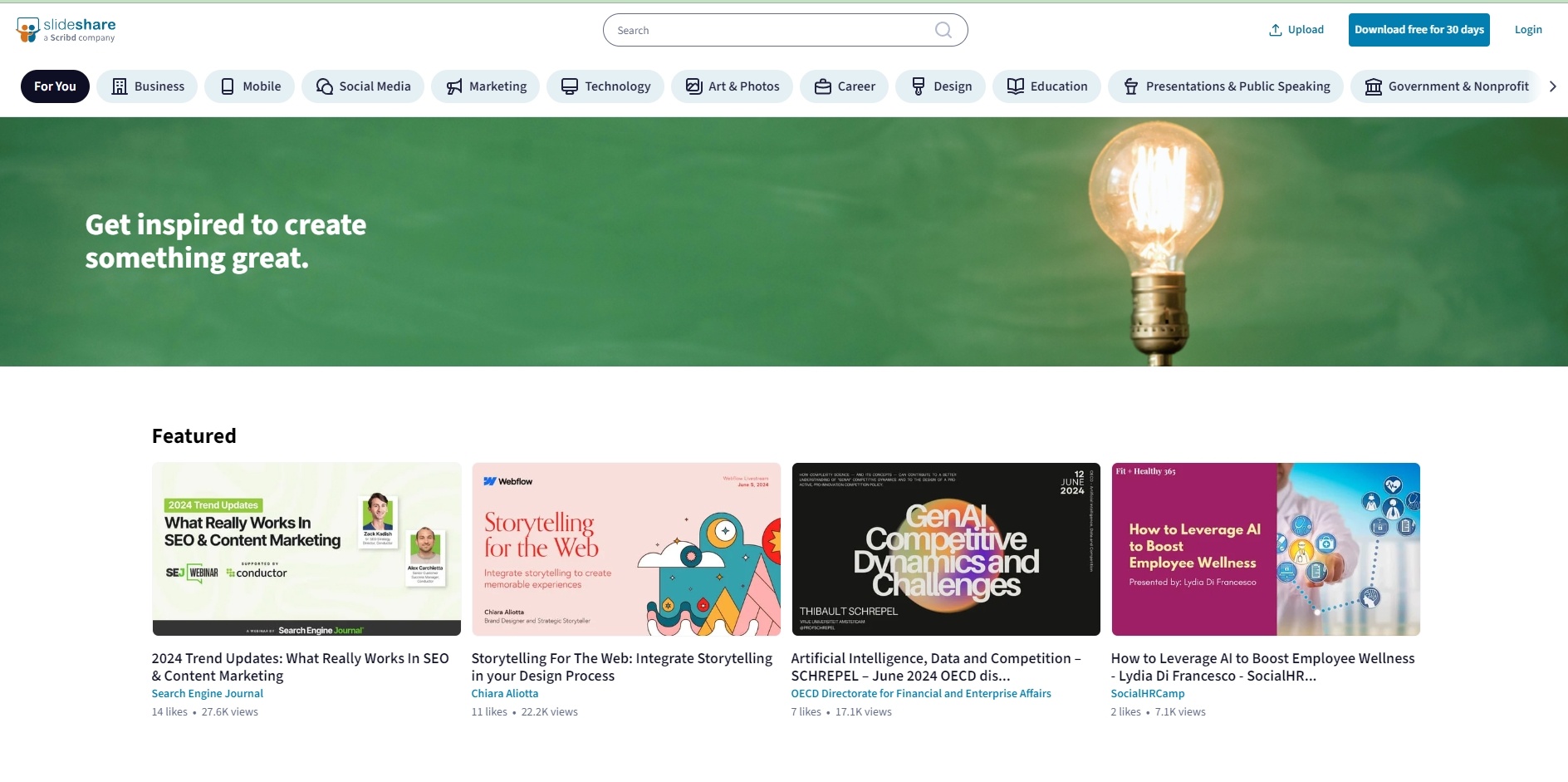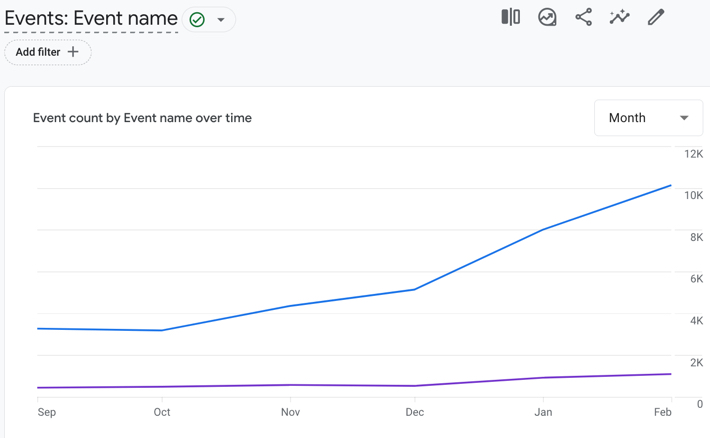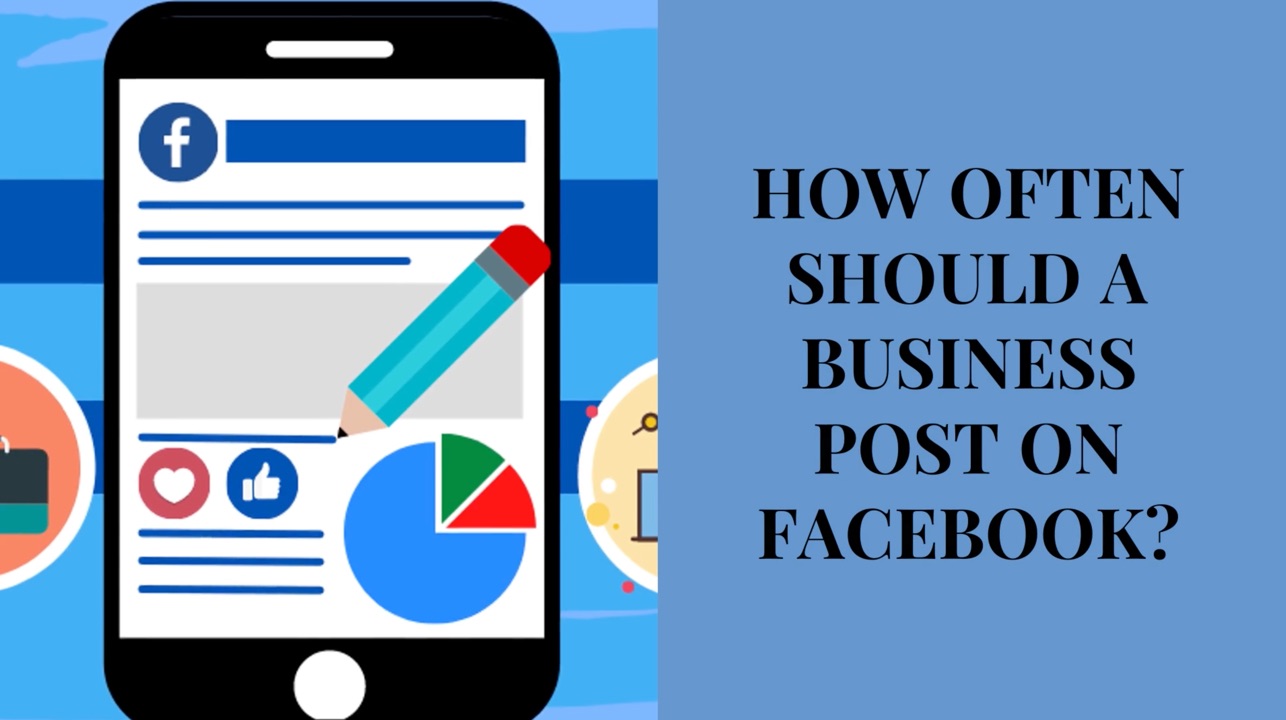Imagine getting more traffic and expanding your reach with minimal extra effort! 🚀
Sounds great, right?
That's exactly what repurposing your blog posts can do for you.
By taking the time to adapt your existing blog posts into different formats, you can extend their lifespan and make your content work harder for you.
Content repurposing is a crucial strategy for content marketers.
It involves transforming your content into new, engaging formats that attract new and diverse audiences who may otherwise never have heard of you.
Whether you're looking to improve your SEO, reach new viewers, or reinforce your brand messaging, repurposing content is the key to achieving these goals.
In this post, we'll explore:
- What content repurposing means
- The benefits it gives you
- 9 effective strategies to maximize your content's impact and engagement.
Ready to dive in?...
What is Content Repurposing?
Content repurposing involves taking existing content and transforming it into different formats or for different uses beyond simple recycling.
And its adoption as a highly effective content marketing strategy is widespread...
60% of marketers reuse their content two to five times. 🔁
Unlike recycling, which might involve minor tweaks or reposting, repurposing includes significant changes in the content’s form or medium to better suit a new audience or platform.
Turn a blog post into a video, an infographic, or a podcast.
The key is to present the core message in a fresh and engaging way.
Benefits of Content Repurposing
SEO Improvement
Creating multiple pieces of content from a single source allows you to target different keywords and increase your chances of ranking in search engines.
Each new format can attract different audience segments and generate more backlinks, boosting your overall SEO.
Reaching New Audiences
Different audiences prefer different content formats. Repurposing allows you to cater to varied preferences, such as videos, infographics, or podcasts.
- Some people prefer watching a video over reading a blog post
- Others might enjoy listening to a podcast on their commute.
Reinforced Messaging
Sharing the same core message across different formats helps reinforce your brand’s message and values.
Repeated exposure to your message in various formats can strengthen audience recall and engagement, making your content more memorable and impactful.
Repurposing blog posts into different formats extends their lifespan and maximizes your content's impactClick To Post On
9 Strategies for Repurposing Blog Posts
Knowing how to repurpose blog posts effectively is essential to maximizing your results—in doing so, you reach a wider audience and maximize the impact your content makes.
Here are nine of the top ways to repurpose your blog posts—pick one or two to start doing regularly, each time you publish a new post.
Strategy 1: Create Infographics
Infographics are visually appealing and can simplify complex information, making it easier for your audience to understand and share.
Transform your data-driven blog posts into infographics that highlight key statistics or steps.
If your blog post contains statistics about social media usage, create an infographic that visually represents this data with charts and icons.
Infographics are highly shareable on social media platforms, which can drive traffic back to your website. There are also infographics submission sites you can submit them to.
Strategy 2: Develop Video Content
Convert your blog content into video tutorials or discussions.
Video content is highly engaging and can be shared on platforms like YouTube, Facebook, and Instagram.
Consider creating explainer videos, interviews, or animated summaries of your blog posts.
In fact, you'll see some examples in this post of how we convert our own blog posts into videos! (There are more on our YouTube channel).
If your blog post is a step-by-step guide on using a software tool, create a screen recording tutorial that walks viewers through the process.
Videos can attract a wider audience, including those who prefer visual and auditory learning.
And guess what? Once you have a video, that can be repurposed in multiple ways too!
Converting blog content into videos can engage audiences on platforms like YouTube and Instagram, broadening your reachClick To Post OnStrategy 3: Produce Podcast Episodes
Use the content of your blog as a script or talking points for podcast episodes.
Podcasts are convenient for audiences to consume on the go and can help you tap into the growing number of podcast listeners.
If your blog post discusses the latest trends in digital marketing, turn it into a podcast episode that expands on these trends.
You can even invite industry experts to discuss the topic, allowing you to reach audiences who prefer audio content and multitask while consuming information.

Strategy 4: Craft an Email Marketing Campaign
Break down your blog posts into a series of emails for an email marketing campaign. This approach keeps your subscribers engaged with bite-sized content and drives traffic to your website.
If you have a detailed blog post about effective content marketing strategies, segment it into several emails, each focusing on a different strategy.
This keeps your audience engaged and encourages them to visit your website for more detailed information.
Strategy 5: Design Social Media Posts
Create a series of social media posts or threads from your blog content, especially for platforms like X, LinkedIn, and Instagram.
Share key insights, quotes, or statistics to spark conversation and drive engagement.
If your blog post lists practical tips, create individual posts for each tip, along with visuals or short videos.
This keeps your social media content fresh and varied while directing followers to the full blog post on your website.
Strategy 6: Compile eBooks or Whitepapers
Aggregate related blog posts into a comprehensive eBook or whitepaper.
These long-form pieces can serve as valuable resources or lead magnets to attract and nurture potential customers.
Compiling related blog posts into eBooks or whitepapers provides in-depth resources for your audienceClick To Post OnIf you’ve written multiple blog posts about SEO best practices, compile them into an eBook that offers a complete guide to SEO.
This not only provides immense value to your audience but also positions you as an authority in your field.
Strategy 7: Update and Relaunch Old Posts
Refresh old blog posts with new information and re-launch them as updated content.
This keeps your content relevant and can improve its performance in search engine rankings.
If you published a blog post about SEO best practices a few years ago, update it with the latest trends and techniques.
This ensures your content remains fresh and valuable to your readers.
Strategy 8: Host Webinars or Live Sessions
Use your blog content as a basis for webinars or live discussions on platforms like Zoom or Facebook Live.
This interactive format lets you engage with your audience and answer their questions in real-time.
If your blog post is about a complex topic, such as advanced SEO techniques, host a webinar where you delve deeper into the subject and provide live demonstrations.
This not only adds value to your content but also helps build a community around your brand.
If you’re unsure how to get started creating (and then presenting) an effective webinar, watch the following video for a quick overview, or click here to see the full guide.
Strategy 9: Create Slide Decks for SlideShare
Turn blog posts into slide decks to share on SlideShare or during industry presentations.
Slide decks are great for breaking down complex topics into digestible slides, which can be easily shared and downloaded.

If your blog post covers a comprehensive guide to content marketing, create a slide deck that summarizes the main points.
This format is particularly useful for presentations and can help you reach a professional audience.
Best Practices for Content Repurposing
Repurposing your content can be a game-changer, but it’s essential to do it right to maintain quality and relevance.
Here are some best practices to ensure your repurposed content maximizes its impact and avoids common pitfalls.
Maintaining Quality and Relevance
When repurposing content, maintaining the quality and relevance of the original piece is crucial. This means updating outdated information, ensuring accuracy, and tailoring the content to fit the new format or platform.
- Update outdated information—regularly review and refresh your content to keep it current. For instance, if a blog post on SEO tips references outdated algorithms, update it with the latest best practices.
- Tailor to the platform—adapt the content to fit the platform’s norms and audience preferences. What works on Instagram might not work on LinkedIn, so customize your approach accordingly.
SEO Considerations
SEO is a critical component of content repurposing. Properly handling SEO can prevent issues with duplicate content and enhance your search engine rankings.
Audience Adaptation
Creating unique and personalized repurposed content tailored to the specific platform and audience is key to maximizing its impact.
- Understand audience preferences—different platforms attract different audiences. For instance, LinkedIn users might prefer detailed, professional insights, while Instagram users might favor visually engaging content. Adapt your repurposed content to meet these preferences.
- Engage with platform features—utilize the unique features of each platform. On Instagram, leverage Stories and Reels, while on X, create threads and use hashtags effectively.
Measuring the Impact of Repurposed Content
Tracking the performance of your repurposed content is essential to understand its effectiveness and identify areas for improvement.
Key Metrics to Track
Monitor engagement rates, conversion rates, and reach. These metrics will help you assess how well your repurposed content is performing.
- Engagement rates—track likes, comments, shares, and interactions to gauge audience interest.
- Conversion rates—measure how many users take the desired action, such as signing up for a newsletter or purchasing a product.
- Reach—determine how many people have seen your content across different platforms.
Tools and Techniques
Utilize tools like Google Analytics, social media analytics, and email marketing software to gain insights into your content’s performance.
- Google Analytics—track traffic sources, user behavior, and conversion paths to understand how your audience interacts with your repurposed content.

- Social media analytics—use built-in analytics tools on platforms like Facebook, LinkedIn, and X to monitor engagement and reach.
- Email marketing software—tools like Mailchimp and Constant Contact can provide data on open rates, click-through rates, and subscriber engagement.
Adjusting Strategies
Based on your analytics insights, tweak your repurposing strategies to better meet your goals.
Continuously refine your approach to ensure your content remains relevant and effective.
Frequently Asked Questions
What is content repurposing?
Content repurposing involves transforming existing content into different formats or for different uses beyond recycling.
How can content repurposing benefit marketers?
Repurposing content allows marketers to target varied keywords, attract new audiences, generate backlinks, and reinforce brand messaging.
What are some strategies for repurposing blog posts?
Strategies include creating infographics, developing video content, producing podcasts, crafting email campaigns, designing social media posts, compiling eBooks, updating old posts, hosting webinars, and creating slide decks.
How can I measure the impact of repurposed content?
Track engagement rates, conversion rates, and reach; use tools like Google Analytics, social media analytics, and email marketing software; adjust strategies based on analytics insights.
What are some best practices for content repurposing?
Maintain quality and relevance, consider SEO implications, adapt content to the audience and platform, and continually measure and refine strategies based on performance.
To Conclude
Repurposing blog posts is a powerful strategy for growing your readership, impact, and engagement.
By leveraging these nine strategies, you can extend the life of your content and reach new audiences without starting from scratch.
Each of these approaches helps maximize the impact of your existing content, ensuring you connect with your audience in their preferred formats.
Start repurposing your content today as part of a sustainable content strategy. By integrating these repurposing techniques, you'll not only save time but also significantly amplify your content's reach and effectiveness, enhancing your overall marketing strategy.




















